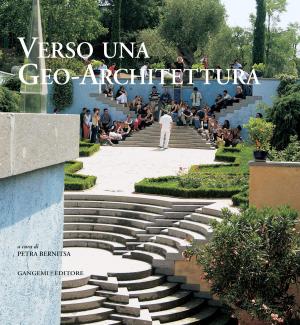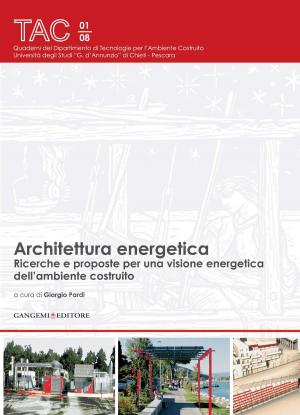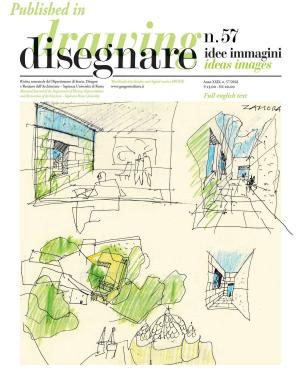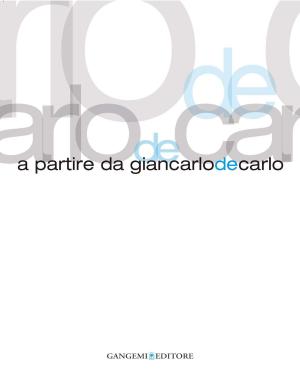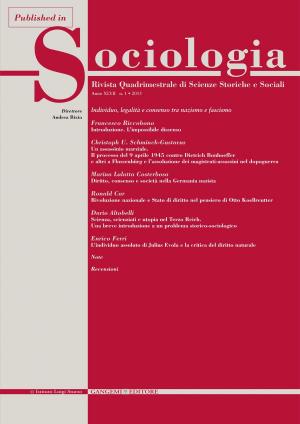La geometria tra teoria e pratica: la costruzione dell’ennagono nell’Antichità | Geometry, theory and practice: the construction of the enneagon in antiquity
Published in Disegnare idee immagini 52/2016. Rivista semestrale del Dipartimento di Storia, Disegno e Restauro dell’Architettura “Sapienza” Università di Roma | Biannual Magazine of the Department of History, Drawing and Restoration of Architecture
Nonfiction, Art & Architecture, Architecture| Author: | Laura Carlevaris | ISBN: | 9788849297386 |
| Publisher: | Gangemi Editore | Publication: | March 8, 2017 |
| Imprint: | Gangemi Editore | Language: | Italian |
| Author: | Laura Carlevaris |
| ISBN: | 9788849297386 |
| Publisher: | Gangemi Editore |
| Publication: | March 8, 2017 |
| Imprint: | Gangemi Editore |
| Language: | Italian |
Le difficoltà legate alla costruzione esatta di alcuni dei poligoni regolari erano note fin dall’antichità e nel loro tracciamento era presente e ampiamente accettato un margine di approssimazione. Se alcuni di essi possono essere costruiti con “riga e compasso”, per ettagono, ennagono, endecagono e altri una costruzione esatta non è possibile con il solo ausilio di quelli che Boyer definisce «strumenti euclidei». Su questi poligoni, e in particolare sull’ettagono, si sono concentrati, nel corso dei secoli, molti studi: meno numerosi, invece, risultano gli approfondimenti sull’ennagono. Alla base della costruzione dell’ennagono regolare è infatti il problema antico della tripartizione dell’angolo, questione intorno alla quale si sono concentrate molte indagini. Sullo stimolo delle riflessioni nate dal rilevamento del teatro romano di Lecce, che sembra progettato su una matrice ennagonale, il contributo propone una costruzione approssimata ma speditiva dell’ennagono a partire dalla corda maggiore basata sul solo impiego di riga e compasso. Le conseguenze dell’approssimazione della costruzione, che viene confrontata con quella riscontrabile in altre costruzioni dell’ennagono, sono infine riportate alla scala dell’edificio per valutarne l’impatto sull’opera realizzata. | The ancients were well aware of how difficult it was to accurately construct several regular polygons. In fact, a certain margin of error was present and accepted when they were drawn. Although some regular polygons can be constructed using a ‘ruler and compass’, it is impossible to accurately construct a heptagon, enneagon, hendecagon, etc. only by using what Boyer calls “Euclidean tools”. Over the centuries numerous studies have performed on these polygons, especially the heptagon, while less numerous studies have been carried out on the enneagon. The ancient problem of the tripartition of the angle lies behind the construction of a regular enneagon, and many studies focused on this issue. Inspired by considerations on the survey of the Roman Theatre in Lecce – ostensibly designed based on an enneagonal matrix – this contribution proposes an approximate but expeditious construction of an enneagon starting with the major chord and using only a ruler and compass. The effects of the approximation of the construction, compared to the approximation in other constructions of an enneagon, are then adjusted to the size of the building to assess the impact on the building itself.
Le difficoltà legate alla costruzione esatta di alcuni dei poligoni regolari erano note fin dall’antichità e nel loro tracciamento era presente e ampiamente accettato un margine di approssimazione. Se alcuni di essi possono essere costruiti con “riga e compasso”, per ettagono, ennagono, endecagono e altri una costruzione esatta non è possibile con il solo ausilio di quelli che Boyer definisce «strumenti euclidei». Su questi poligoni, e in particolare sull’ettagono, si sono concentrati, nel corso dei secoli, molti studi: meno numerosi, invece, risultano gli approfondimenti sull’ennagono. Alla base della costruzione dell’ennagono regolare è infatti il problema antico della tripartizione dell’angolo, questione intorno alla quale si sono concentrate molte indagini. Sullo stimolo delle riflessioni nate dal rilevamento del teatro romano di Lecce, che sembra progettato su una matrice ennagonale, il contributo propone una costruzione approssimata ma speditiva dell’ennagono a partire dalla corda maggiore basata sul solo impiego di riga e compasso. Le conseguenze dell’approssimazione della costruzione, che viene confrontata con quella riscontrabile in altre costruzioni dell’ennagono, sono infine riportate alla scala dell’edificio per valutarne l’impatto sull’opera realizzata. | The ancients were well aware of how difficult it was to accurately construct several regular polygons. In fact, a certain margin of error was present and accepted when they were drawn. Although some regular polygons can be constructed using a ‘ruler and compass’, it is impossible to accurately construct a heptagon, enneagon, hendecagon, etc. only by using what Boyer calls “Euclidean tools”. Over the centuries numerous studies have performed on these polygons, especially the heptagon, while less numerous studies have been carried out on the enneagon. The ancient problem of the tripartition of the angle lies behind the construction of a regular enneagon, and many studies focused on this issue. Inspired by considerations on the survey of the Roman Theatre in Lecce – ostensibly designed based on an enneagonal matrix – this contribution proposes an approximate but expeditious construction of an enneagon starting with the major chord and using only a ruler and compass. The effects of the approximation of the construction, compared to the approximation in other constructions of an enneagon, are then adjusted to the size of the building to assess the impact on the building itself.

